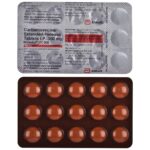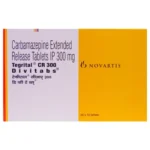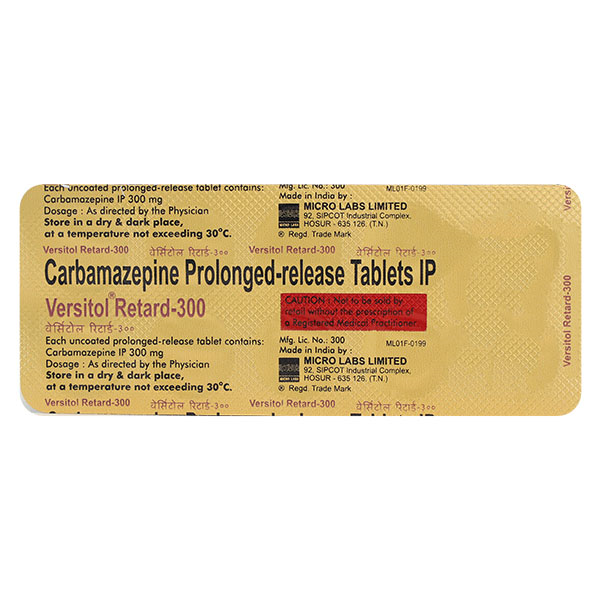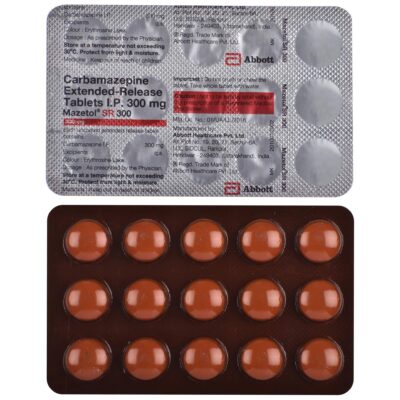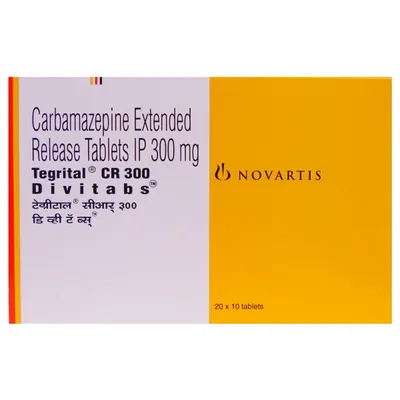Description
⚡🧠💊 Carbamazepine 300mg: High-Potency Control for Seizures, Neuralgia & Mood Swings
Carbamazepine 300mg is a high-strength anticonvulsant and mood stabilizer used to treat a variety of neurological and psychiatric conditions, most notably epilepsy, trigeminal neuralgia, and bipolar disorder. It is especially effective in patients requiring moderate to high doses for long-term disease control, offering robust protection against seizures, nerve pain, and emotional instability. Its action on hyperactive neurons makes it a vital therapy in both acute and maintenance settings.
🔬 Mechanism of Action
Carbamazepine works primarily by:
-
Blocking voltage-gated sodium channels in nerve cells, preventing repetitive and excessive neuronal firing.
-
Stabilizing hyperexcitable neuronal membranes, particularly in seizure foci.
-
Modulating neurotransmitter activity (glutamate, GABA, dopamine), contributing to its mood-stabilizing and analgesic effects.
These combined actions help manage:
-
Seizure propagation
-
Neuropathic pain transmission
-
Mood dysregulation
💊 Clinical Indications
Carbamazepine 300mg is typically prescribed for:
-
Epilepsy
-
Partial seizures (focal onset), with or without secondary generalization
-
Generalized tonic-clonic seizures
⚠️ Not effective in absence or myoclonic seizures
-
-
Trigeminal Neuralgia
-
Considered the gold-standard treatment for this intense facial nerve pain
-
-
Bipolar Affective Disorder
-
Used to control acute manic or mixed episodes
-
Also for long-term mood stabilization
-
-
Other Uses (Off-label)
-
Glossopharyngeal neuralgia
-
Neuropathic pain syndromes (e.g., diabetic neuropathy)
-
Alcohol withdrawal seizures
-
Schizoaffective disorder (adjunct)
-
⚖️ Dosage and Administration
-
Starting dose may begin lower (100–200mg), then titrated up to 300mg or more based on patient response.
-
Maintenance dose commonly ranges from 600–1200mg/day, split into 2 or 3 doses.
-
300mg tablets are ideal for patients stabilized on mid-to-high doses.
-
Should be taken with food to minimize stomach irritation.
-
Available in immediate-release and controlled-release (CR) forms for sustained effect.
⚠️ Side Effects and Monitoring
Common side effects:
-
Dizziness, drowsiness
-
Blurred vision, nausea
-
Coordination issues (ataxia)
Serious side effects:
-
Agranulocytosis, aplastic anemia → Regular CBC monitoring required
-
Hepatotoxicity → Check liver function tests (LFTs)
-
Stevens-Johnson Syndrome (SJS) or Toxic Epidermal Necrolysis (TEN), especially in Asians with HLA-B*1502 gene
-
Hyponatremia (especially in elderly patients)
Drug Interactions:
-
Strong inducer of CYP450 enzymes
→ Reduces efficacy of many drugs (e.g., warfarin, oral contraceptives) -
Avoid with MAO inhibitors (14-day washout needed)
Pregnancy:
-
Category D: Risk of birth defects (e.g., neural tube defects)
-
Supplement with folic acid if use is essential
📈 Monitoring Recommendations
-
Therapeutic drug levels: 4–12 mcg/mL
-
CBC, LFTs, serum sodium regularly
-
Screening for HLA-B*1502 allele before starting in Asian populations
📌 Conclusion
Carbamazepine 300mg offers a powerful, sustained defense against seizures, chronic nerve pain, and mood disorders. Ideal for patients needing higher maintenance doses, it combines effectiveness with long-term tolerability when used under proper medical supervision. With regular monitoring and careful dose adjustment, it plays a cornerstone role in comprehensive neurological and psychiatric care.
Note: This information is intended for educational purposes and should not replace professional medical advice. Always consult a healthcare provider for personalized guidance.
